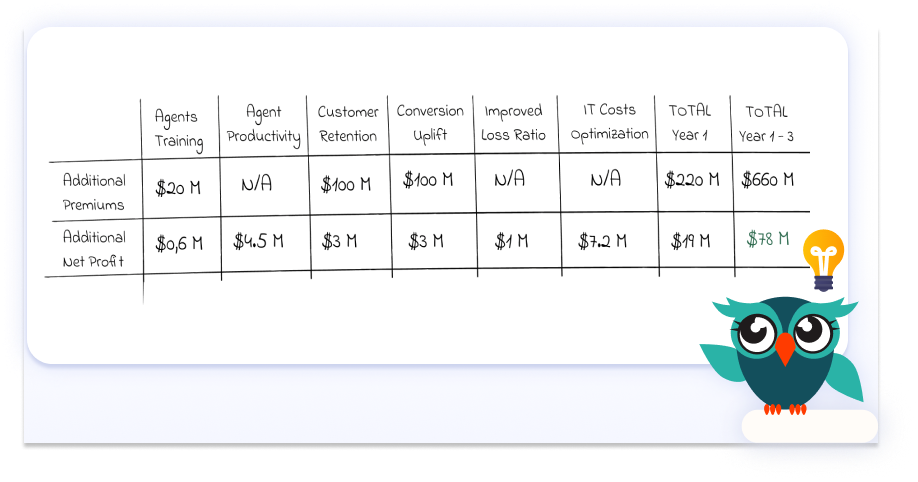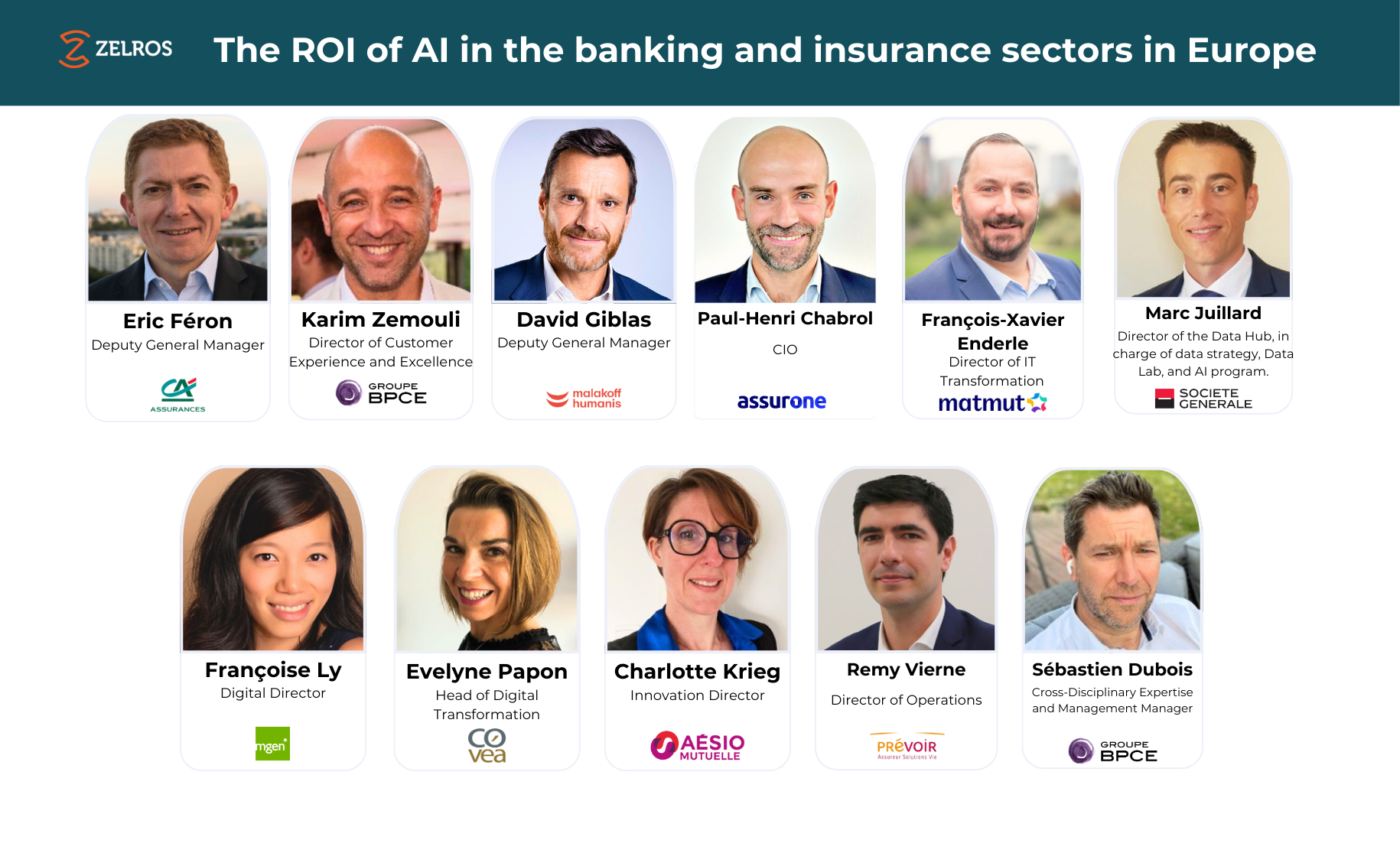Measuring the ROI of Innovative Insurance Technologies: A Case Study by Zelros
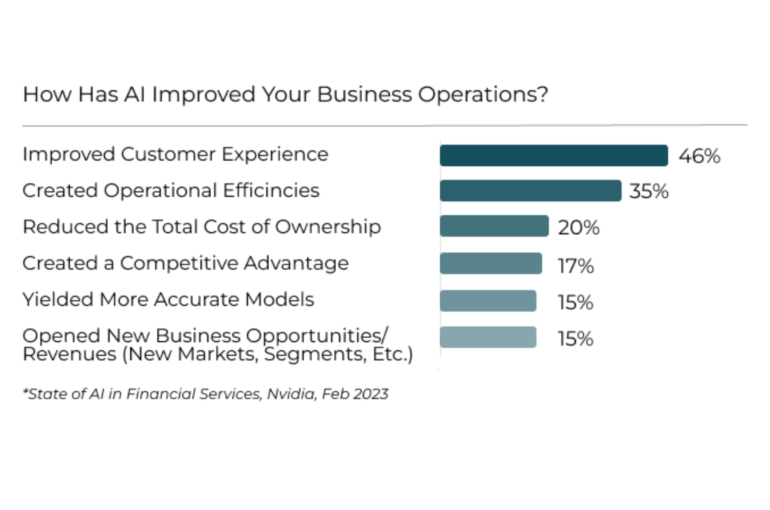
The insurance industry is experiencing a rapid transformation driven by technological advancements. As outlined in the latest NVIDIA report on the state of AI in financial services, AI applications are creating significant value in improving customer experiences and enhancing operational efficiency. In the face of current macroeconomic challenges, it has become crucial for insurance companies to measure the return on investment (ROI) of these innovative technologies. In this blog, we will delve into a case study that demonstrates how a technology like Zelros can deliver an ROI of over 10 times.
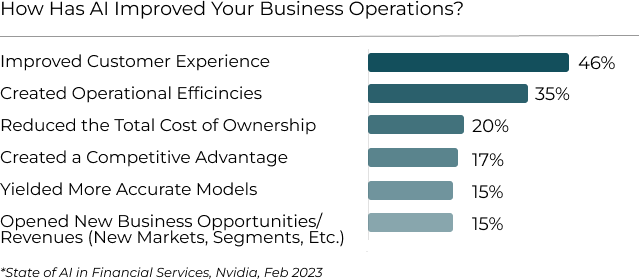

Zelros’ Case Study: A Large P&C Insurance Carrier / MGA
Let’s consider a large and established property and casualty (P&C) insurance carrier or managing general agent (MGA) with the following portfolio:
- 10 million contracts (5 million motor insurance & 5 million home insurance)
- Average premium = $2,000 / year / contract (total revenue = $20 billion)
- Average net profit = $60 / year / contract (total annual profit = $600 million)
The company utilizes multiple distribution channels to sell its insurance products:
- 200,000 net new contracts per year are generated by 1000 agents with a conversion ratio of 30%
- 50,000 new contracts per year are generated by direct-to-consumer digital channels with a conversion rate of 1% from visitors to contracts.
Let’s deep dive into the benefits of innovative technologies:
Benefit N°1: Agents Training
With a turnover rate of 15%, the carrier needs to train approximately 150 new agents each year. By leveraging Zelros, the training time is reduced from 6 months to just 2 months. This extra 4-month training time results in a 5% boost in efficiency, equivalent to 10,000 additional contracts per year, amounting to $20 million in additional premiums annually.
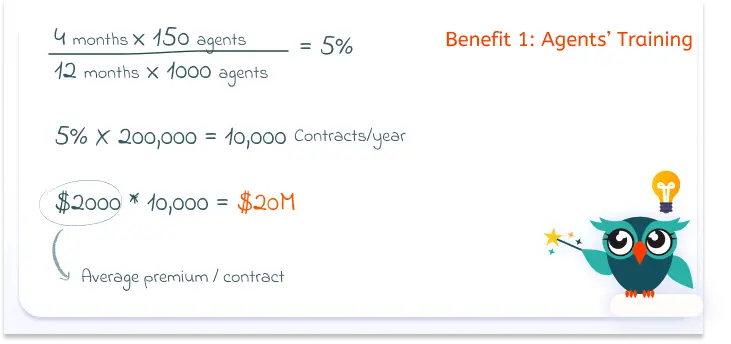
Benefit N°2: Agents’ Productivity
Equipping agents with modern tools that enhance their efficiency allows them to save time. Assuming 1000 agents save 30 minutes per day, the company saves 115,000 hours per year, resulting in cost savings of around $4.5 million.
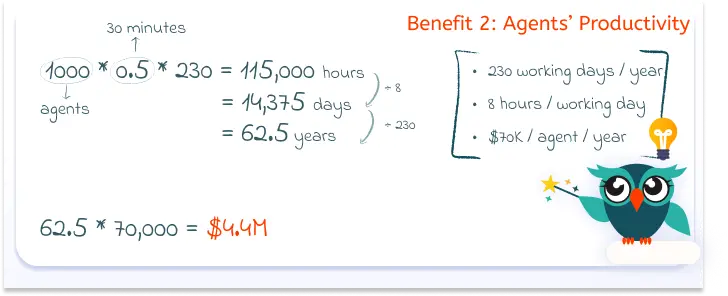
Benefit N°3: Customer Retention
By leveraging technology to offer personalized and preventive services, the company can reduce customer churn from 10% to 9.5%. This saves 50,000 contracts per year, equivalent to $100 million in saved premiums.
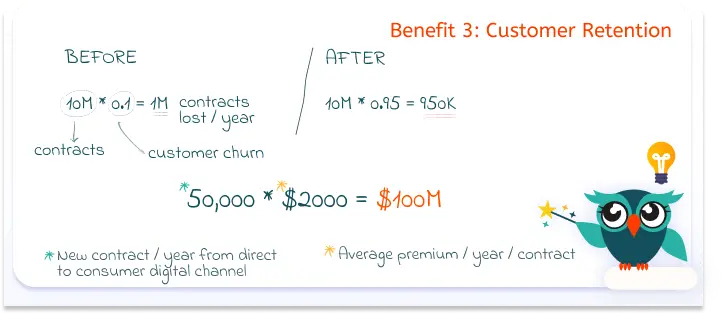
Benefit N°4: Conversion Uplift
For agent/advisors channels: By utilizing technology, agents can improve protection advice and targeted actions, the company achieves a 10% uplift in the conversion rate. This translates to 20,000 additional contracts per year, resulting in $40 million in additional premiums.
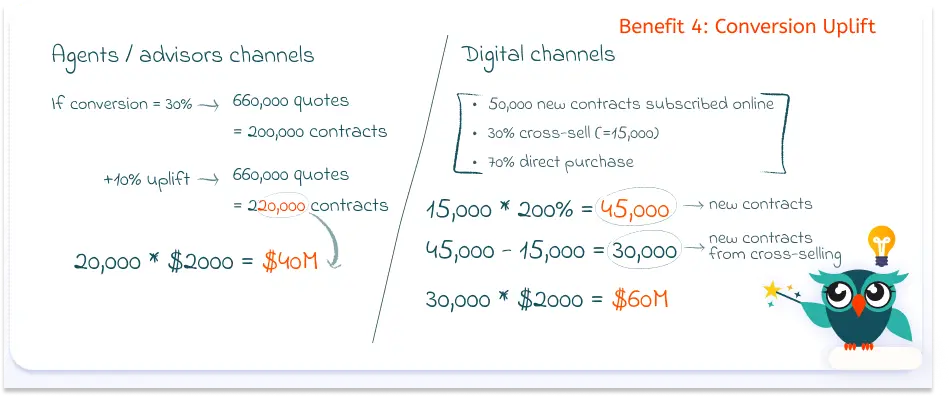
For digital channels: Insurers can greatly improve engagement by providing highly personalized and relevant content to current or potential policyholders when they access a landing page or their self-care portal. It can represent up to $60M in additional premiums
Benefit N°5: Improved Loss Ratio through Advanced Risk Selection and Prevention
By better selecting risks and providing proactive prevention messages, the company improves the profitability of its products by 5%. This leads to an incremental profit of $1 million from the 250,000 new contracts.
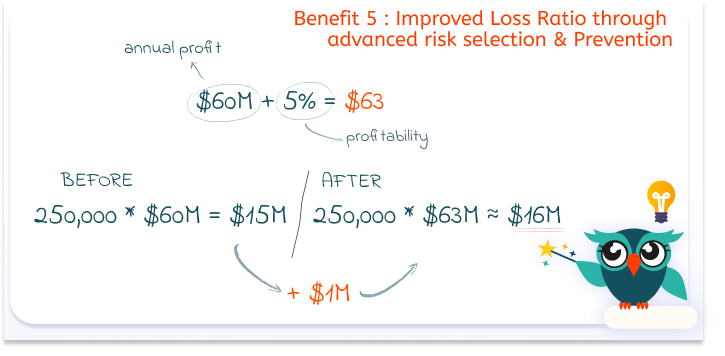
Benefit N°6: IT Costs Optimization
Insurers can streamline their IT landscape by adopting cutting-edge and advanced technologies. One such technology, like Zelros, facilitates the consolidation and elimination of redundancies in projects and systems related to Next Best Offer (NBO) or analytics. A 5% optimization in the transformation budget, for example, results in a positive contribution of $7.2 million to the organization’s profits.
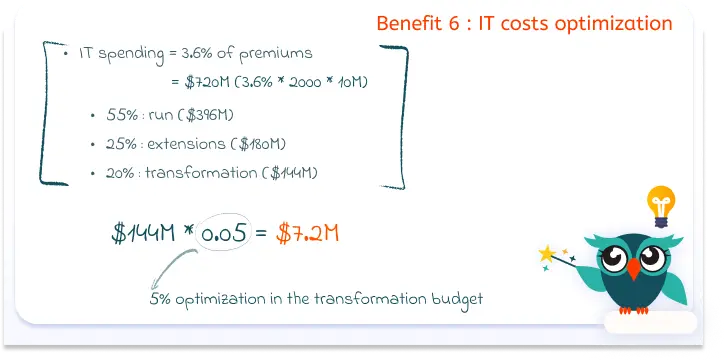
Conclusion: Three-Year Gains
When we examine the collective gains from the various benefits outlined in the case study, it becomes evident that implementing technology like Zelros can yield significant results over a three-year period. Let’s take a closer look at the overall gains:
Additional Premiums: In the first year alone, the company can expect $220 million in additional premiums as a result of the improved efficiency, customer retention, and conversion uplift. Over the course of three years, the cumulative total of additional premiums amounts to an impressive $660 million.
Additional Net Profit: The increased premiums also lead to additional net profits. In the first year, the company can achieve an additional net profit of $19 million. Over the three-year period, the cumulative total of additional net profits reaches $78 million. This represents a substantial gain of 4.3% for the company.
Considering the significant net profit contribution of $78 million, the investment required to capture these gains is relatively modest. Using an example investment of $2.5 million per year, the return on investment (ROI) is over 10 times within three years.
The bottom line is that by embracing innovative technologies like Zelros and harnessing their benefits across multiple aspects of the insurance business, companies can not only enhance their operational efficiency and customer experience but also achieve substantial financial gains. It is clear that the investment in such technologies is advantageous and offers a strong ROI, making it a compelling decision for insurers looking to thrive in the evolving landscape of the insurance industry.
If you’re interested in exploring how Zelros’ recommendation engine can make an impact on your digital and agent sales channels, you can request a free study analysis to get a personalized analysis of its potential benefits for your specific business.
